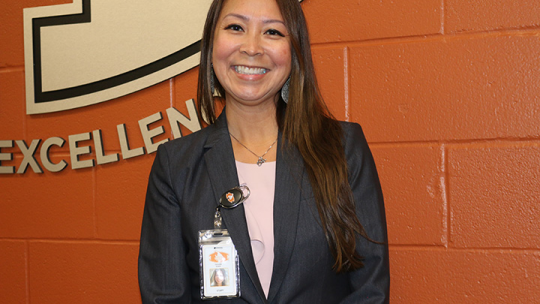HUTTO – A system-wide culture of inclusiveness that focuses on making sure all students have equal access to success sounds like it should be every school district’s goal, but without a dedicated guiding force, the vision becomes little more than wishful thinking.
In July, Dr. Thymai Dong became Hutto ISD’s director of diversity, equity and inclusion, commonly referred to as DEI. Her position was created as a result of a community task force on racism, equality, and inclusiveness, whose recommendations were also incorporated into one of the goals of Hutto ISD’s district improvement plan.
“When I came the district had six objectives for DEI,” Dong said. “I added the 7th, the antibullying component,” said Dong.
October marks National Bullying Prevention Month, and one school that embraces the concept every day is Ray Elementary. Both Ray Elementary and Hutto Middle School have earned the Anti-Defamation League’s “No Place For Hate” designation and are currently working with other schools so that eventually every campus in the district can participate.
Ray Elementary principal Alexis Campbell said she has seen results from the No Place For Hate program. “When we look at our bullying report, we haven’t had bullying issues. That’s decreased. Our referrals, which are students sent to the office, have decreased the last three years. This is our first year we’ll be able to compare to before COVID, so we’re excited to see what that looks like,” she said.
Eloy Paredes, school counselor at Ray Elementary, adds that the more students are exposed to the ideas the more they start to use the terminology internally and communicate it to others. “Kids do mention to each other that ‘hey you can’t do that, we’re supposed to be using kindness’. We also have the Hippo Way culture that supports anti-bullying districtwide and complements what we’re doing. The kids were already familiar with the Hippo Way and now No Place For Hate brings in the verbiage of being an ally, being kind, and treating others with respect.”
Making schools a safe and welcoming place for all students is a crucial element, but the data shows that not all inequality stems from how people treat each other.
“We all have the tendency for implicit bias and the danger is if it changes into systemic bias creating disadvantages for some students,” said Dong. “In the past there was an ‘Aha!’ moment when we realized students who were Black and Hispanic were hugely successful in STAAR math but not being encouraged to take advanced math in 6th grade. Now everyone who shows potential is automatically opted into the advanced class and can opt out.”
Dong said the efforts cannot stop at just providing students equal opportunity. “With Black and Hispanic students not being used to advanced classes, what is the teacher doing to make them feel comfortable in that class and are they doing anything culturally to access their knowledge and make it relevant to them?” she added. “We need to talk to the students and hear about their struggles and focus on how we keep them in the courses.”
Another area of concern is having clubs and teams reflect the demographics of the schools. “Many students are motivated to come to school because of the extracurricular activities that are interesting to them, so we have to make sure that we have something to interest them, and again Blacks and Hispanics are not well represented in the existing activities. We need to look at adding culturally interesting clubs and other opportunities,” she said.
Diversity is also important to see in the faces the students look to for daily instruction. According to Dong, Hutto ISD’s student population is 46% Hispanic, but only 21% of the workforce is Hispanic. Black students represent 13% of students and only 8% of staff. 32% of students are white, as compared to 68% of teachers.
“From my experience there’s a scarcity of diverse candidates out there. We have some strategies such as working with teaching colleges and also growing our own program from students who maybe want to be teachers and bringing them back to the community after they’ve graduated. It’s a fertile area. We will also look at getting qualitative data from existing Black and Hispanic teachers and using it to recruit additional staff,” Dong said.
Hutto ISD’s prioritization of equity is not new but adding a DEI director and an actionable goal in the district improvement plan gives the concept structure to explore inequities or potential disadvantageous outcomes for student groups.
“Nothing is pre-destined based on race or social class or language to determine if a student is going to succeed or not,” Dong said. “Our success is going to be measured by looking at student data outcomes.”








